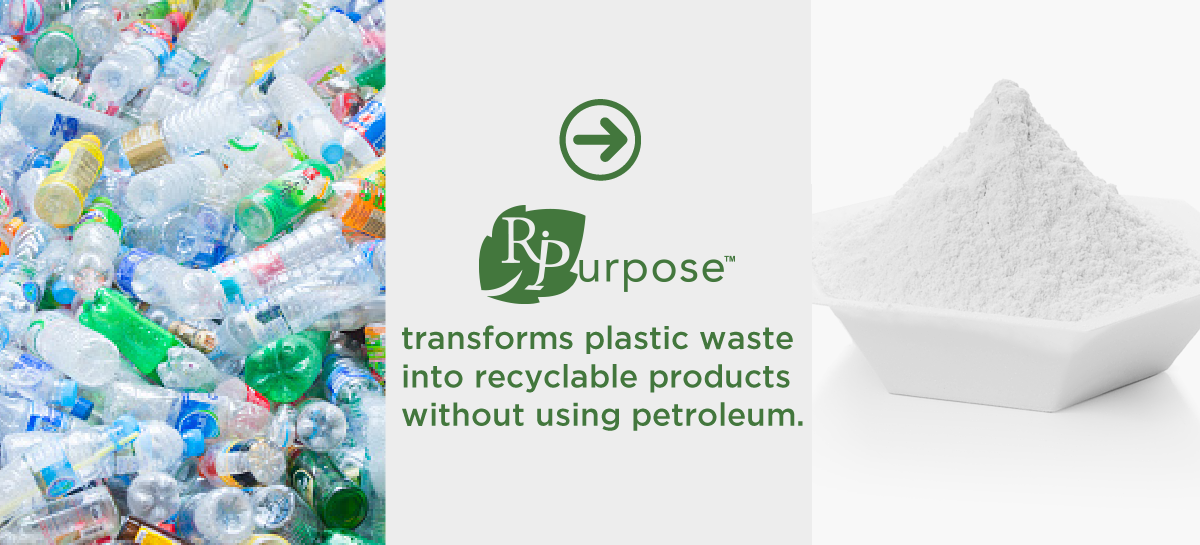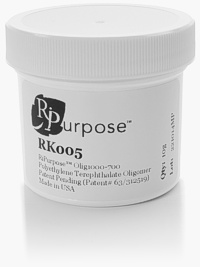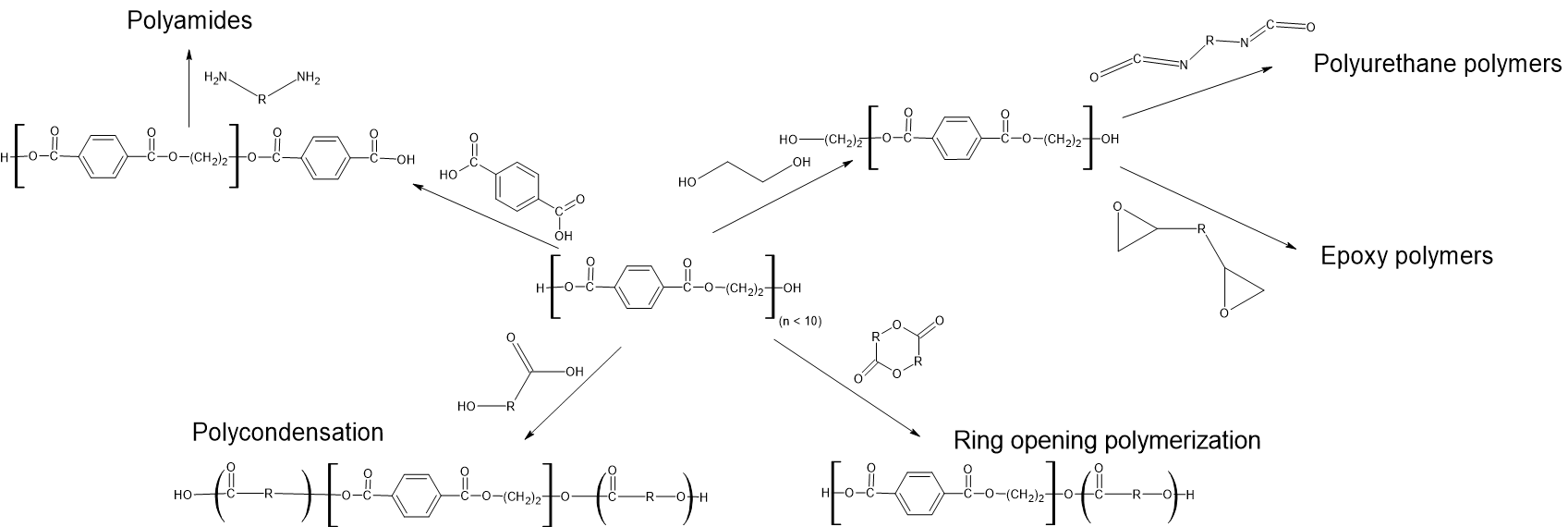RiPurpose™ Olig1000-700

Green Feedstock for Renewable Polymers
Produced from 100% post-consumer plastic
Target Applications
Polyethylene Terephthalate
Polyesters
Polyurethanes
Epoxies
Polyamides

 About RiPurpose Olig1000-700
About RiPurpose Olig1000-700
RiPurpose Olig1000-700 is produced by the chemical breakdown of post-consumer waste polyethylene terephthalate (PET) plastic collected from the ocean and environment. This product contains oligomers with terminal hydroxyl and carboxylic acid functional groups. This sustainable and green co-monomer can be used as a direct replacement for petroleum-derived feedstock to produce high-value renewable and upcycled polymers by polycondensation and transesterification reactions. RiPurpose Olig1000-700 can be directly used as a feedstock during the polycondensation step of PET production, thereby avoiding the esterification step to prepare a prepolymer intermediate. By using this recycled feedstock, customers can claim CO2 emission reduction of up to 60% for their end-use polymers. Our product line will enable customers to create a circular economy and decarbonize polymer industries while addressing environmental and water-borne waste plastic challenges, and preserving fossil resources; thus, creating a positive societal impact.
Technical information
The development of PET oligomer addresses several of the problems prevalent with conventional PET recycling progress by providing a versatile precursor for further modifications [1]. This oligomeric material has both alcohol and acidic end groups which enable a wide array of applications. For example, the material can be utilized as an initiator for ring-opening polymerization of various monomers, such as caprolactone, which can be used to make PET-co-caprolactone copolymers that can be utilized as compatibilizers in polymer blends [2,3]. Additionally, polycondensation can be performed with a wide variety of materials to create novel polymeric materials. An example of this is the co-reaction between PET and poly(tetramethylene oxide) which has been reported recently in literature for the creation of versatile multi-blocks segmented poly(ether-ester)s such as poly(ethylene terephthalate-co-1,4-cyclohexanedimethylene terephthalate)-block-poly(tetramethylene oxide) which has highly controlled melt and mechanical properties [4].
Further modification of the polymer can be achieved by initially reacting it with an excess quantity of ethylene glycol under polycondensation to convert the precursor into a di-alcohol endcap product. This can subsequently be reacted with isothiocyanates to form PET-polyurethanes in which case the PET behaves as a chain extender in the stepwise reaction [5]. Similarly, a reaction with diglycidyl compounds can be used for the preparation of epoxies. Conversely, a reaction with excess terephthalic acid can convert into a diacid form. This can subsequently be reacted with diamines in a polycondensation condition to form polyamides [6]. The potential applications for this versatile precursor are diverse and hold great promise for further development.

Case Study
Renewable PET: Renewable PET was synthesized by partially or fully replacing the conventional PET feedstock with RiPurpose Olig1000-700.
Ordering information
- Price does not include shipping/handling and applicable sales tax
- This product is for research use only and it is not intended for use in humans or for in vitro diagnostic use.
- Terms and Conditions Apply
- Utilize discount code RIPURPOSE10 at check out to receive a 10% discount on RiPurpose products.
RiPurpose™ is a trademark of RiKarbon, 550 S. College Ave, Suite 107, Newark, DE 19713. For more information about RiPurpose and RiKarbon visit www.rikarbon.com.
References
- Jankauskaite, Virginija, Gintaras Macijauskas, and Ramūnas Lygaitis. "Polyethylene terephthalate waste recycling and application possibilities: a review." Mater Sci (Medžiagotyra) 14.2 (2008): 119-127.
- Laurienzo, Paola, Barbara Immirzi, and Mario Malinconico. "A Preliminary Investigation on the Use of Poly [(ethylene terephthalate)‐co‐(ε‐caprolactone)] Copolymer as Compatibiliser of HDPE/PET Blends." Macromolecular Materials and Engineering 286.4 (2001): 248-253.
- Ben Gara, M., W. Kammoun, C. Delaite, S. Abid, and R. El Gharbi. "Synthesis and Characterization of Aliphatic-Aromatic Copolyesters From Pet Waste and ϵ-Caprolactone." Journal of Macromolecular Science 52.6 (2015): 454-464.
- Paszkiewicz, Sandra, et al. "Synthesis and characterization of poly (ethylene terephthalate-co-1, 4-cyclohexanedimethylene terephtlatate)-block-poly (tetramethylene oxide) copolymers." RSC advances 7.66 (2017): 41745-41754.
- Zhou, Xing, et al. "Synthesis and characterization of waterborne polyurethane dispersion from glycolyzed products of waste polyethylene terephthalate used as soft and hard segment." International Journal of Adhesion and Adhesives 74 (2017): 49-56.
- Peng, Shumin, et al. "A novel synthetic strategy for preparing semi‐aromatic components modified polyamide 6 polymer." Journal of Polymer Science Part A: Polymer Chemistry 56.9 (2018): 959-967.
 Akinalytics
Akinalytics Polymer Blog
Polymer Blog






